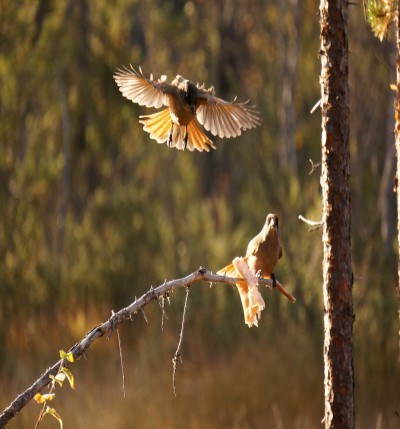Changed routines for thinning could favor biodiversity

Julian Klein has in his thesis showed that conventional thinning reduces the forest’s structural variety and has a strong influence on which and how many bird and lichen species can live in the young managed forests typical of Fennoscandia. His recommendation to foresters and policy makers would be small steps forward towards a more sustainable use of the planets resources. Read his popular scientific summary.
Why did I do the research that has led to this thesis?
The multitude of species on Earth is declining at an unprecedented rate. The reason for this is the fact that we humans have been replacing the natural world with an anthropocentric one, one that is managed for our own needs. To change this course, we need to find new ways of using our environment. The boreal forest, which is the largest forest on Earth, is in many of its corners still unmanaged. In Fennoscandia, this is very different. Here, many forest species are declining in numbers and today’s forestry practices are not ecologically sustainable. Forestry methods that maintain biodiversity have consequentially been called for. One such methods is Retention Forestry where parts of the forest and the structures that are important for biodiversity are left untouched in the forest. However, few retention methods have been suggested for conventional thinning in boreal forests, and none have been tested in experiments, and experiments are vital for drawing solid conclusions.
What did I do?
In conventional forest thinning, economically less valuable structures like deciduous trees, dead wood, and small undergrowth trees are removed. Through empirical and experimental studies in Sweden, I wanted to find out how conventional and alternative thinning methods affect the diversity and occurrence of forest birds and tree-living lichens, as well as the breeding success of the Siberian jay. Popular science summary
What did I find out?
My results show that conventional thinning reduces the forest’s structural variety and has a strong influence on which and how many bird and lichen species can live in the young managed forests typical of Fennoscandia. This effect was mostly negative for birds, but under certain conditions positive for tree-living lichens. I show that biodiversity in these young managed forests would probably increase, if:
- The undergrowth on the whole forest stand or entire plots of ca. 1 ha are spared during thinning.
- If many tree species at an even mixture are left standing.
- If more large-diameter trees are spared.
The Siberian jay is considered and indicator of the effect of thinning on bird species relying on forest with both dense and open vegetation. I found out that Siberian jays have a higher chance of breeding successfully in open forests, far away from humans, where nest predators are rare. Close to humans however, their breeding success was higher in denser forests where the nest is protected from predators. Based on these results and with the help of remote sensing data, I provide detailed maps that show where in the landscape thinning can increase and where it can decrease the jay’s breeding success.
What is the contribution of the thesis?
All of these findings help fill the research gap for young managed boreal forests, which in Fennoscandia make up 60% of all managed stands. Therefore, this thesis adds novel and essential points to the guidelines for managers and policy makers that wish to combine biomass production with environmental commitments in the boreal forest. Ultimately, the implementation of this thesis’ findings would be small step forward towards a more sustainable use of the planets resources.
Julian will defend his thesis 16 October 2020
Contact
Julian.Klein@slu.se